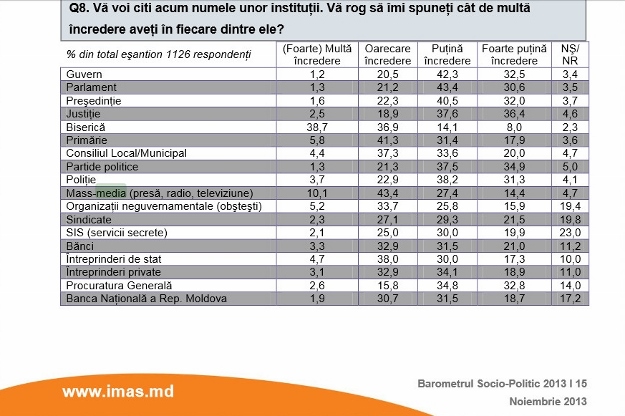
The media came in second place when it comes to the level of trust citizens have in Moldovan institutions, according to the results of the most recent Sociopolitical Barometer released by the Institute of Marketing and Polling in Moldova (IMAS). The survey was ordered by the Information Agency IPN. The highest level of trust manifested by Moldovans is in relation to the Church, a constant trend over the years.
The survey was presented by the General Director of IMAS, Doru Petruti, during a press conference at the Information Agency IPN's headquarters. According to the barometer, over 10% of interviewees had a high level of trust in the media and more than 40% said they trusted media to some extent.
Respondents were also asked about their attitude to the parliamentary opposition represented by the Communist Party. Almost 40% of people answered that under the communist rule the press was insufficiently free, while 14% said that it was not free at all. Only 5% considered that media were mostly free. A similar trend is reported with regard to the observance of human rights during the communist rule, while 60% of respondents felt the activities of the previous government were opaque.
The authors of the survey were also interested in assessing the population's opinion about the steps being taken by the authorities towards European integration, as well as regarding the issue of public awareness of the future Eastern partnership summit in Vilnius. As it turned out, the population was well informed, which led to the conclusion that the media covered the topic properly.
On the other hand, the poll shows that if people had to choose between the European Union and the Customs Union of Russia, Belarus and Kazakhstan, almost 50% of Moldovans would vote for accession to the EU, but some 45.7% want to enter the Customs Union.
The survey was conducted from October 19th to November 11th, among 1,126 people from 76 cities and villages. Statistical error is plus/minus 3%.













